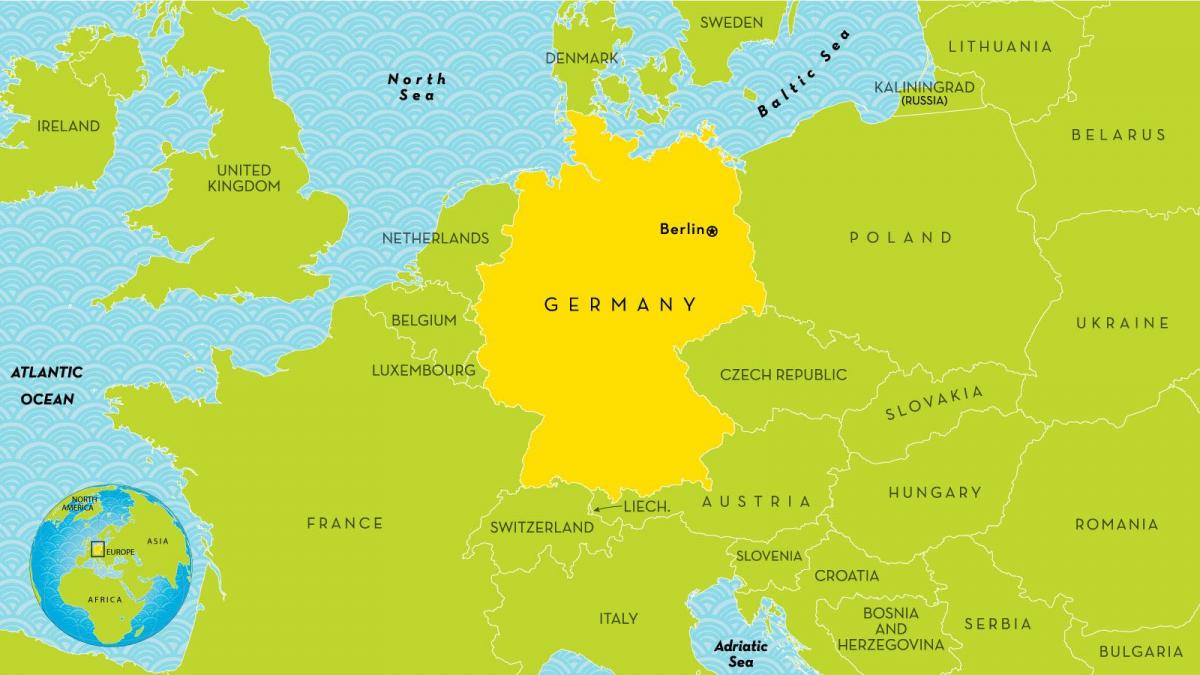search
Map of Germany and surrounding countries
Germany and surrounding countries map. Map of Germany and surrounding countries (Western Europe - Europe) to print. Map of Germany and surrounding countries (Western Europe - Europe) to download. Germany is bounded at its extreme north on the Jutland peninsula by Denmark. East and west of the peninsula, the Baltic Sea (Ostsee) and North Sea coasts, respectively, complete the northern border. To the west, Germany borders The Netherlands, Belgium, and Luxembourg; to the southwest it borders France as its shown in the map of Germany and surrounding countries. Being the historic core of Europe and the "twin engine for European integration", the cooperation with France is one of the most central elements of German foreign policy. The Elysée Treaty from 1963 set the foundation for a collaboration that - next to the European project - also repeatedly called for a "Core Union" with maximum integration 1. Germany shares its entire southern boundary with Switzerland and Austria. In the southeast the border with the Czech Republic corresponds to an earlier boundary of 1918, renewed by treaty in 1945.
The easternmost frontier adjoins Poland along the northward course of the Neisse River and subsequently the Oder to the Baltic Sea, with a westward deviation in the north to exclude the former German port city of Stettin (now Szczecin, Poland) and the Oder mouth as its mentioned in the map of Germany and surrounding countries. This border reflects the loss of Germany eastern territories to Poland, agreed to at the Yalta Conference (February 1945), mandated at the Potsdam Conference (July–August 1945) held among the victorious World War II Allies, and reaffirmed by subsequent governments.
Relations between Germany and the Netherlands were established following the unification of Germany in 1871 as you can see in the map of Germany and surrounding countries. During the First World War, the German army refrained from attacking the Netherlands, and thus relations between the two states were preserved. At war end in 1918, the former Kaiser Wilhelm II fled to the Netherlands, where he lived till his death in 1941. Belgium and Germany share important joint interests and work closely and well together. As founding members of the EU , they have forged close ties through decades of joint efforts to build and deepen the Union and their shared views on its future course and approaches to the current challenges. Relations between the Grand Duchy of Luxembourg and the Federal Republic of Germany are close and in a spirit of trust, both on the political and economic fronts and in the cultural realm.


